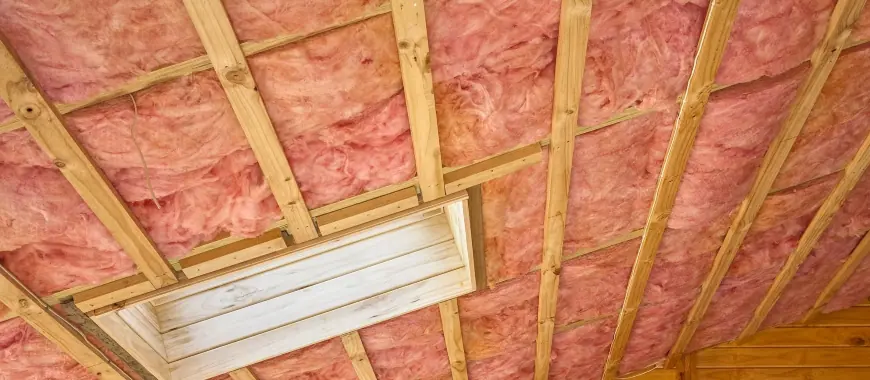
Spray applied fiberglass insulation is a modern and efficient insulation solution that involves spraying loose fiberglass particles into walls, ceilings, or other hard-to-reach areas. This method allows for a more precise fit compared to traditional fiberglass batts, ensuring better thermal performance by eliminating air gaps. It is commonly used in residential, commercial, and industrial buildings to improve energy efficiency and reduce heating and cooling costs. GangLong Fiberglass offers high-quality spray applied fiberglass insulation that is suitable for a variety of construction projects. This insulation option also provides soundproofing benefits and is resistant to fire, making it a versatile choice for both new builds and renovations. GangLong Fiberglass manufactures and distributes spray applied fiberglass insulation, which seals gaps and cracks in walls, attics, crawl spaces, and foundations to prevent drafts and heat loss.
Simplifying Your Life: Key Functionalities
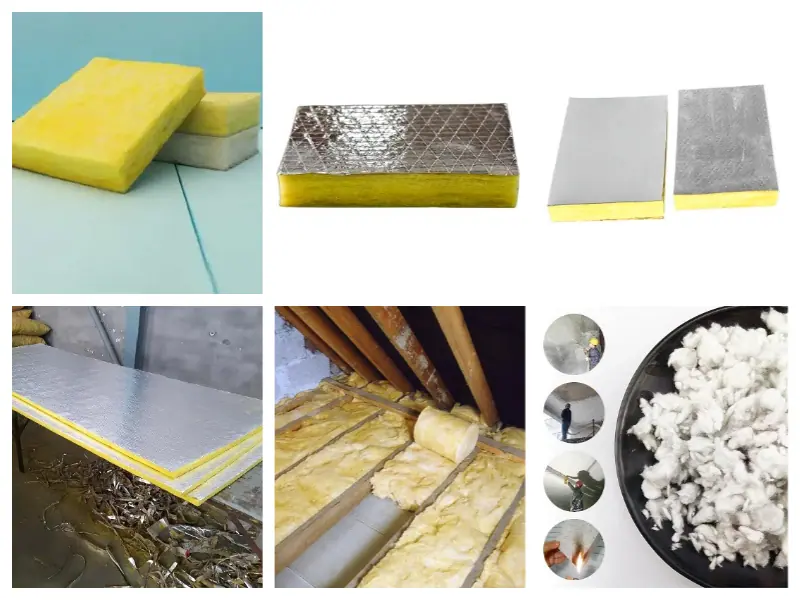
What is Spray Applied Fiberglass Insulation?
Spray-applied fiberglass insulation is an efficient and versatile method of insulating buildings by spraying or blowing small fiberglass particles into wall cavities, ceilings, attics, and other spaces. This technique ensures thorough coverage by filling irregular shapes and hard-to-reach areas, reducing air leakage and enhancing thermal performance. The snug fit provided by this insulation helps minimize energy loss, making it an excellent choice for improving energy efficiency in both new constructions and retrofits. Products like GangLong Fiberglass spray-applied insulation are designed for easy application and long-lasting effectiveness, catering to residential, commercial, and industrial projects. A key benefit of spray-applied fiberglass insulation is its adaptability to various applications, such as walls, ceilings, and pre-insulated FRP pipes. By integrating insulation with FRP pipes, thermal performance is further enhanced, reducing energy costs across diverse settings. This method not only provides thermal efficiency but also offers soundproofing and fire-resistant properties, contributing to the safety and comfort of the building. GangLong Fiberglass delivers high-quality insulation solutions that combine efficiency, durability, and ease of installation, making it a popular choice for modern construction needs.
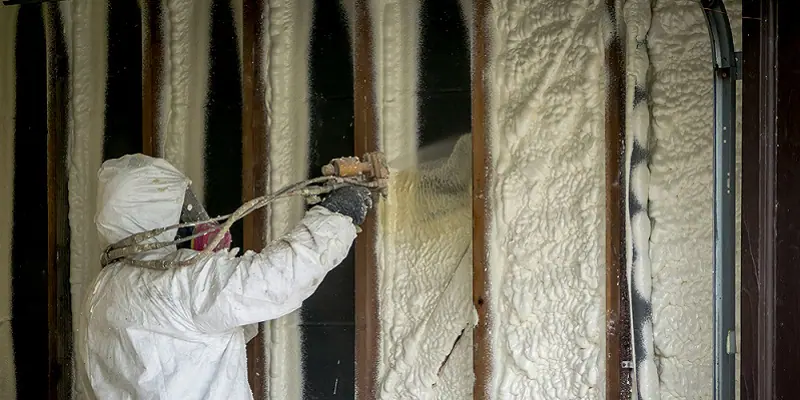
Applications of Spray Applied Fiberglass Insulation
Spray applied fiberglass insulation is commonly used in a variety of applications, from homes to commercial buildings and industrial facilities. It is particularly effective in insulating walls, attics, and ceilings, as well as around pipes, ducts, and other utilities. The adaptability of spray insulation means it can be used in spaces where traditional insulation products might not fit properly. GangLong Fiberglass spray applied fiberglass insulation is ideal for projects requiring custom-fit insulation, especially in areas where energy efficiency is a priority. It is also an excellent solution for retrofitting older buildings to improve their insulation and lower energy costs.
Advantages for Energy Efficiency
One of the primary reasons for using spray applied fiberglass insulation is its ability to improve a building’s energy efficiency. By filling every gap and crevice, this type of insulation prevents heat from escaping during the winter and keeps cool air inside during the summer. As a result, buildings with GangLong Fiberglass spray applied fiberglass insulation tend to require less energy for heating and cooling, leading to significant cost savings on energy bills. Over time, the initial investment in spray applied insulation pays off through reduced energy consumption and a more comfortable indoor environment.
The Key of Choosing Spray Applied Fiberglass Insulation for Soundproofing
Another significant benefit of spray applied fiberglass insulation is its ability to reduce sound transmission between rooms and floors. The dense, packed nature of the fiberglass fibers helps to absorb sound waves, making it an excellent option for noise reduction in homes, offices, and multi-family buildings. GangLong Fiberglass offers insulation products that can significantly improve soundproofing, creating quieter indoor environments. This is particularly important in settings like apartment buildings, recording studios, and office spaces where controlling noise is a priority.
Spray-applied fiberglass insulation is not only an effective thermal barrier but also an excellent solution for soundproofing. The dense composition of fiberglass fibers absorbs sound waves, significantly reducing noise transmission between rooms or floors. This makes it an ideal choice for enhancing the acoustic performance of buildings, particularly in multi-family residences, office spaces, and commercial environments where noise control is crucial. By filling cavities with spray-applied fiberglass insulation, building owners can create quieter and more comfortable spaces for residents, employees, or customers.
GangLong Fiberglass spray-applied insulation stands out as a preferred option for projects prioritizing sound insulation. Its ability to improve acoustics makes it especially valuable in settings like hotels, apartment complexes, entertainment venues, and other areas requiring effective noise reduction. In addition to reducing sound transmission, this insulation also enhances overall occupant comfort, creating a more pleasant indoor environment. With its dual benefits of thermal and soundproofing properties, spray-applied fiberglass insulation is a versatile and practical solution for various building applications.
Spray Applied Fiberglass Insulation and Moisture Resistance
Moisture resistance is a critical advantage of spray-applied fiberglass insulation, making it a reliable choice for areas prone to dampness or humidity, such as basements and crawl spaces. Unlike some other insulation materials, fiberglass is less likely to absorb water, reducing the risk of moisture buildup within walls or ceilings. While spray-applied fiberglass insulation is not inherently a vapor barrier, it works effectively to minimize moisture accumulation when paired with fiberglass insulation with vapor barrier systems. GangLong Fiberglass offers high-quality spray-applied fiberglass insulation designed to perform well in a variety of environmental conditions, ensuring long-term durability and effectiveness.
When installed correctly with a vapor barrier, spray-applied fiberglass insulation can help address moisture-related challenges by reducing condensation and preventing mold growth. This combination enhances the insulation’s overall performance and contributes to a healthier indoor environment. GangLong Fiberglass products excel in maintaining their integrity even in humid climates, offering consistent thermal and soundproofing benefits while protecting against potential water damage. These moisture-resistant properties make spray-applied fiberglass insulation a practical solution for maintaining energy efficiency and safeguarding structures in moisture-prone areas.
Moisture Control with Spray Applied Fiberglass Insulation
Moisture resistance is a key consideration when choosing insulation, and spray applied fiberglass insulation performs well in this regard. While fiberglass is not a vapor barrier, it does help to reduce the risk of moisture accumulation within walls and ceilings. This can be especially important in areas prone to high humidity or dampness. GangLong Fiberglass products are designed to resist moisture, helping to prevent issues such as mold growth or structural damage caused by water infiltration. When properly installed in combination with vapor barriers, spray applied fiberglass insulation can enhance the moisture management of a building, ensuring long-lasting protection against environmental factors.
Best fiberglass insulation with plastic covering for attic applications
Benefits of Spray Applied Fiberglass Insulation
Spray-applied fiberglass insulation offers a wide range of benefits, making it an excellent choice for both residential and commercial applications. Its adaptability allows it to conform to irregular shapes and fill hard-to-reach spaces, ensuring comprehensive coverage and eliminating air gaps that can cause energy inefficiencies. This results in improved thermal performance, helping to stabilize indoor temperatures and reduce the need for excessive heating or cooling. GangLong Fiberglass products are particularly effective in enhancing energy efficiency, making them a cost-effective solution for reducing utility costs over time.
In addition to its thermal benefits, spray-applied fiberglass insulation provides soundproofing by dampening sound transmission between rooms or floors, creating quieter indoor environments. It is also fire-resistant, offering an added layer of safety by slowing the spread of flames in case of a fire. Lightweight and easy to handle, this insulation is quick to install, making it a time-efficient option for projects of all sizes. Furthermore, its environmentally friendly composition supports sustainable building practices. These combined advantages make spray-applied fiberglass insulation a versatile, reliable, and eco-conscious choice for modern construction needs.
Environmental Impact of Spray Applied Fiberglass Insulation
Spray-applied fiberglass insulation is an environmentally friendly choice, offering significant sustainability benefits for modern construction. Made primarily from recycled glass materials, it helps reduce the environmental footprint of building projects by repurposing waste into high-performance insulation. GangLong Fiberglass products are designed with eco-consciousness in mind, ensuring they provide energy-saving advantages while maintaining a safe and non-toxic composition. Unlike some other insulation materials, spray-applied fiberglass insulation does not contain harmful chemicals, making it a safer option for both installers and building occupants.
The energy efficiency provided by spray-applied fiberglass insulation further enhances its positive environmental impact. By improving a building’s thermal performance, it reduces the need for excessive heating and cooling, leading to lower energy consumption and decreased greenhouse gas emissions. These benefits align with the growing demand for sustainable building practices, making spray-applied fiberglass insulation an ideal choice for those seeking eco-friendly solutions. Whether for residential or commercial use, it supports the creation of environmentally responsible structures while delivering reliable insulation performance.
Fire Resistance of Spray Applied Fiberglass Insulation
GangLong Fiberglass products are designed to meet fire safety standards and help slow the spread of flames in the event of a fire, including our fireproof fiberglass insulation. This insulation not only enhances safety but also contributes to energy efficiency and overall building performance. The fiberglass material does not ignite or burn easily, providing an additional layer of protection to the building’s occupants. This characteristic makes spray applied fiberglass insulation an ideal choice for areas where fire safety is a concern, such as near electrical equipment, boilers, and other heat-producing appliances.
Fire Safety with Spray Applied Fiberglass Insulation
Fire safety is a critical feature of spray-applied fiberglass insulation, making it a trusted choice for enhancing building protection. Fiberglass is naturally non-combustible, meaning it does not ignite easily or contribute to the spread of flames. This property is especially valuable in reducing fire risks and providing additional safety for occupants and property. GangLong Fiberglass products meet stringent fire safety standards, ensuring that they provide reliable protection in both residential and commercial buildings. Their fire-resistant nature also allows safe installation around electrical wiring and other components, minimizing potential hazards.
The use of spray-applied fiberglass insulation can play a significant role in slowing the spread of fire, offering valuable time for evacuation during emergencies. By incorporating this insulation, builders not only enhance energy efficiency but also meet essential fire safety codes and regulations. Its dual functionality of insulation and fire resistance makes it a practical and reliable choice for a wide range of applications, from homes to office buildings and industrial facilities. With GangLong Fiberglass products, property owners can prioritize safety without compromising performance or durability.
How about Using Spray Applied Fiberglass Insulation for Retrofitting Projects
Spray applied fiberglass insulation is an excellent solution for retrofitting older buildings, addressing the common issue of inadequate insulation in many older homes and commercial properties. These buildings often suffer from high energy costs and uncomfortable indoor environments due to outdated or insufficient insulation. By using GangLong Fiberglass spray applied insulation, contractors can easily upgrade the thermal performance of existing structures without the need for extensive demolition or structural changes. The spray application method allows for seamless coverage, including hard-to-reach areas, making it an efficient and cost-effective way to improve energy efficiency.
This minimally invasive approach to retrofitting provides several advantages over traditional insulation methods. Since there is no need to remove drywall or make major renovations, the installation process is faster and less disruptive to the building’s occupants. Furthermore, spray applied fiberglass insulation fills gaps and voids in walls, attics, and other spaces, ensuring better overall thermal performance. This makes it an ideal choice for property owners looking to reduce their energy bills and increase comfort, all while avoiding costly and time-consuming renovations.
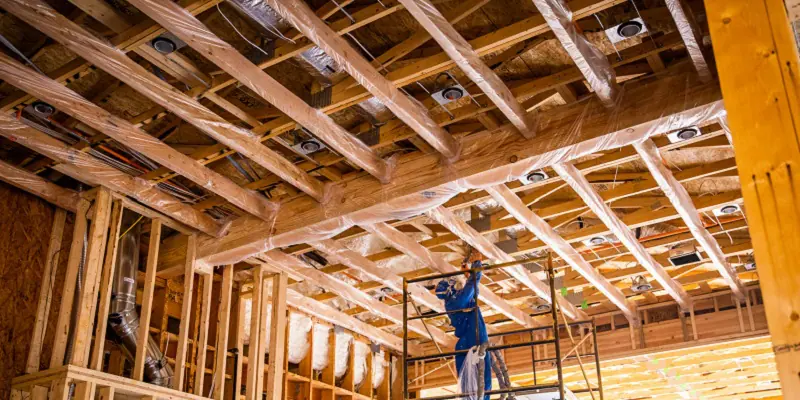
How Spray Applied Fiberglass Insulation Works
Spray applied fiberglass insulation works by using specialized equipment to blow loose fiberglass fibers into open cavities, where they settle and bond together to form an effective insulating barrier. The equipment used for this process can be adjusted to control the density and flow of the fiberglass, ensuring precise and even coverage in all areas, including hard-to-reach or irregularly shaped spaces. This makes it an ideal solution for both residential and commercial retrofitting projects, where traditional batt insulation may not be suitable. GangLong Fiberglass products are designed for compatibility with standard spray machines, allowing for a quick and efficient installation process.
Once sprayed, the fiberglass fibers fill gaps and cavities, creating a continuous, seamless insulating layer that improves the building’s thermal performance. This helps to regulate indoor temperatures, reducing the need for excessive heating or cooling, and ultimately lowering energy costs. The even distribution of insulation also helps to minimize air leakage, further enhancing energy efficiency. With GangLong Fiberglass spray applied insulation, contractors can achieve high-performance results across various types of structures, ensuring long-lasting comfort and energy savings.
Equipment Used for Spray Applied Fiberglass Insulation
The installation of spray-applied fiberglass insulation requires specialized equipment, such as blower or sprayer machines, designed to evenly distribute the fiberglass fibers. These machines ensure the insulation adheres to surfaces and fills cavities completely, providing thorough coverage for optimal thermal and soundproofing performance. GangLong Fiberglass products are fully compatible with standard insulation equipment, making them easy to apply across a variety of construction projects. Proper use of this equipment is essential to achieving even distribution and maximizing the insulation’s effectiveness, contributing to energy efficiency and overall building performance.
The efficiency and adjustability of spray machines play a key role in the installation process. These machines allow installers to control the flow and density of the insulation material, ensuring precise application tailored to the specific needs of each space. The quick and precise application enabled by this equipment not only enhances insulation performance but also reduces labor costs and shortens project timelines. With GangLong Fiberglass products and standard spray equipment, contractors can achieve professional results efficiently, making spray-applied fiberglass insulation a practical and cost-effective solution for residential and commercial projects alike.
Installation Process of Spray Applied Fiberglass Insulation
The installation of spray applied fiberglass insulation is a straightforward process, though it requires specialized equipment. A blower machine is used to spray the fiberglass into the designated areas, allowing it to fill every corner and cavity. GangLong Fiberglass offers a range of products compatible with standard insulation equipment, ensuring that the installation process is smooth and efficient. The blown-in nature of the insulation allows for quick coverage, which reduces labor time and costs. Proper installation ensures the insulation provides the maximum benefits in terms of thermal performance, soundproofing, and fire resistance.
Cost Considerations for Spray Applied Fiberglass Insulation
The cost of spray applied fiberglass insulation can vary depending on the size of the project, the thickness of insulation required, and other factors. However, it is generally considered a cost-effective insulation solution when compared to some alternatives. GangLong Fiberglass offers competitive pricing on spray applied fiberglass insulation products, making it accessible for a wide range of building projects. Additionally, the long-term energy savings achieved through improved insulation performance often outweigh the initial cost of installation, making it a worthwhile investment for most property owners.
Safety and Health Considerations for Spray Applied Fiberglass Insulation
Safety is an important consideration when installing and using spray applied fiberglass insulation. The installation process requires protective gear, as the fiberglass particles can be irritating to the skin, eyes, and respiratory system. GangLong Fiberglass provides safety guidelines to ensure proper handling during installation. Once the insulation is in place, it is generally safe and poses no health risks to occupants. However, in some cases, additional protective barriers may be recommended in areas with high foot traffic or exposure to extreme conditions to prevent fiber release over time.
The Key of Using Equipment for Spray Applied Fiberglass Insulation
Specialized equipment is required for the effective application of spray applied fiberglass insulation. A blower machine is used to spray the fiberglass into walls, attics, or other spaces, ensuring even coverage. These machines can be adjusted to control the density and flow of insulation, allowing for precise application. GangLong Fiberglass offers best fiberglass insulation that work well with standard equipment, making it easy for contractors and builders to achieve the desired level of insulation in any project. Proper use of equipment is essential for maximizing the benefits of spray applied fiberglass insulation.
Where to Use Vinyl Backed Fiberglass Insulation in Construction
Long-Term Durability of Spray Applied Fiberglass Insulation
Once installed, spray applied fiberglass insulation offers long-term durability with minimal maintenance required. GangLong Fiberglass products are designed to last for years, providing continuous thermal performance without needing to be replaced. The fiberglass material is resistant to pests, mold, and moisture, making it a low-maintenance option for building owners. Unlike some insulation materials that may degrade over time, spray applied fiberglass insulation remains stable and effective, helping to maintain a consistent indoor temperature and reduce energy consumption for the life of the building.
Key Fiberglass Insulation Manufacturers Leading the Market
Maintenance and Durability of Spray Applied Fiberglass Insulation
Spray-applied fiberglass insulation is a highly durable and low-maintenance solution for enhancing a building’s energy efficiency and comfort. Once installed, the insulation remains stable within walls, ceilings, or attics, retaining its shape and performance over time without settling or shifting. GangLong Fiberglass products are specifically designed to withstand normal wear and tear, as well as environmental challenges such as moisture, pests, and temperature fluctuations. This durability ensures that the insulation continues to provide effective thermal and soundproofing benefits throughout its long lifespan, making it an excellent investment for property owners.
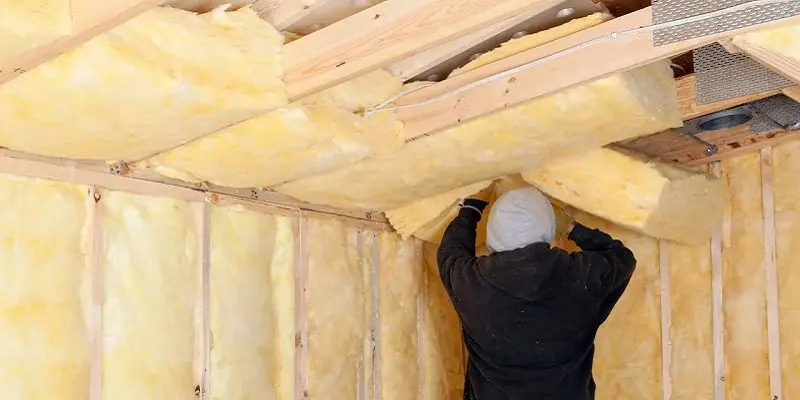
The low-maintenance nature of spray-applied fiberglass insulation is a significant advantage. Resistant to mold, decay, and pest infestations, it requires little to no upkeep after installation, reducing the need for costly repairs or replacements. Its stability and long-lasting thermal performance help maintain the building’s energy efficiency, ensuring consistent indoor comfort for years. These qualities, combined with the reliability of GangLong Fiberglass products, make spray-applied fiberglass insulation a cost-effective, long-term solution for both residential and commercial properties.
FAQs about Spray Applied Fiberglass Insulation
Fiberglass insulation may not be the best option in all situations. One of the main reasons to avoid fiberglass insulation is its potential health risks. Handling fiberglass can cause skin irritation, and inhaling its tiny particles can irritate the respiratory system. Additionally, fiberglass insulation can lose effectiveness if it becomes compressed or wet, as it’s not moisture-resistant. In areas prone to high humidity or leaks, fiberglass insulation may retain moisture, leading to mold growth or reduced thermal performance. Lastly, fiberglass does not provide the air sealing that spray foam insulation can, potentially leading to energy inefficiencies in some homes.
The choice between spray foam insulation and fiberglass insulation depends on various factors such as budget, installation preferences, and performance requirements. Spray foam insulation offers superior air sealing and has a higher R-value, making it more energy-efficient. However, it is typically more expensive than fiberglass. Fiberglass insulation, whether in batts or blown-in form, is cost-effective and easier to install but may not offer the same level of air sealing as spray foam. Spray foam is also more moisture-resistant, making it a better option for damp environments.
The R-value of spray fiberglass insulation typically ranges from R-2.2 to R-4.3 per inch, depending on the specific type and density of the insulation used. The R-value measures the material’s ability to resist heat flow, with higher numbers indicating better insulating performance. Spray fiberglass is effective at filling cavities, but its R-value is generally lower than spray foam insulation, which can offer superior thermal resistance in certain applications. It’s essential to consider the required insulation level for your region and project when choosing between different insulation types.
Yes, fiberglass insulation can be sprayed. Spray applied fiberglass insulation uses specialized equipment to blow loose fiberglass fibers into wall cavities, attics, and other spaces, where they form an insulating barrier. This method is highly effective because it allows the insulation to reach difficult-to-access areas and irregular shapes that traditional batt insulation may not cover efficiently. The sprayed fiberglass fibers bond together to create a seamless and continuous layer of insulation that helps improve a building’s thermal performance. This process also fills gaps and cracks, reducing air leakage and improving energy efficiency. Spray applied fiberglass insulation is commonly used in retrofitting projects for both residential and commercial buildings, offering an effective and minimally invasive solution to enhance insulation without requiring major renovations or tearing down walls.
While it is technically possible to spray fiberglass insulation yourself, it is generally not recommended for the average DIYer. The process requires specialized equipment, such as spray machines designed to blow loose fiberglass fibers into cavities. These machines can be difficult to operate without experience and can lead to uneven insulation application if not used correctly. Additionally, safety precautions must be followed when handling fiberglass materials, as the fibers can be irritating to the skin, eyes, and lungs. Professional contractors who are trained in spray applied fiberglass insulation have the knowledge and experience to ensure proper installation, consistent coverage, and optimal performance. If you’re considering DIY insulation, it’s important to thoroughly research the equipment, materials, and safety procedures. For most homeowners, hiring a professional installer is the safest and most efficient option for achieving high-quality results.
Monoglass spray-on insulation typically has an R-value ranging from R-3.0 to R-4.0 per inch of thickness, depending on the specific product and application method. The R-value is a measure of the insulation’s ability to resist heat flow, and a higher R-value indicates better thermal resistance. Monoglass insulation, often used for spray applied fiberglass systems, provides a continuous barrier that can help regulate indoor temperatures by reducing heat loss in winter and preventing heat gain in summer. The exact R-value can vary based on factors such as the density of the material, the application technique, and the thickness of the layer applied. For maximum effectiveness, it is essential to ensure that the insulation is applied evenly and fills all gaps, as the performance of spray applied insulation is highly dependent on proper installation. Always consult product specifications for the precise R-value of the insulation you’re using.

As the editor of GangLong Fiberglass, I have years of experience and in-depth research, focusing on cable tray products, fiberglass solutions, and grille systems. I incorporate years of industry insights and practical experience into every content, committed to promoting the progress of the industry. At GangLong Fiberglass, my commitment is reflected in every product, from innovative cable trays to durable fiberglass solutions and sturdy grille systems. As an authoritative voice in the industry, my goal is to provide valuable information to professionals and businesses and promote forward-looking solutions.


